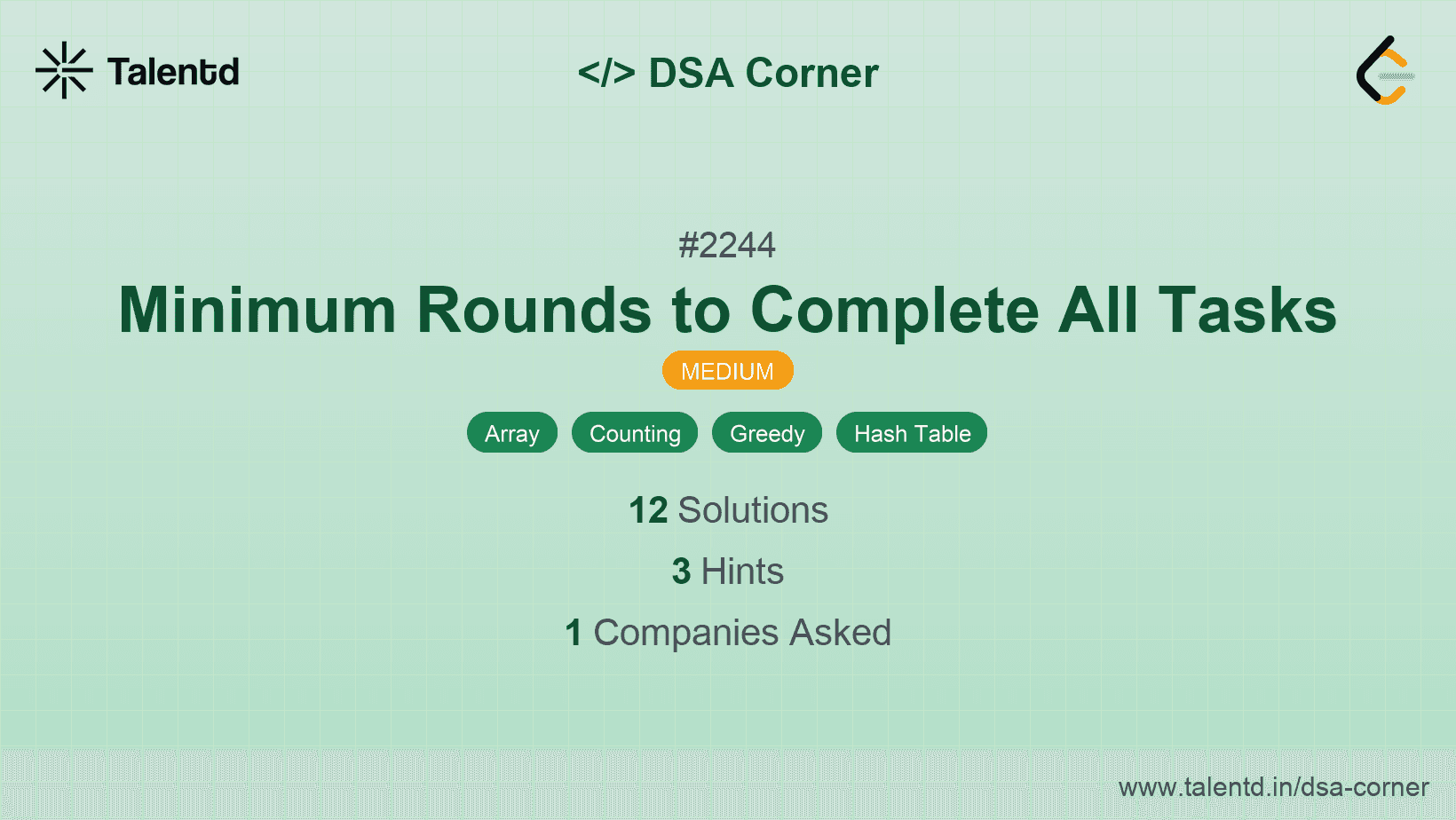
Sponsored
Sponsored
This approach involves breaking down the problem into smaller subproblems, solving each of them independently, and combining their results in an efficient way. It often uses recursion to handle each subproblem.
Time Complexity: T(n) = 2T(n/2) + O(n) => O(n log n)
Space Complexity: O(log n) due to recursion stack space.
1#include <stdio.h>
2
3void solveProblem(/* parameters */) {
4 // Base case solution
5 if (/* base condition */) {
6 return;
7 }
8 // Divide
9 int mid = /* calculate middle */;
10 // Conquer
11 solveProblem(/* left part */);
12 solveProblem(/* right part */);
13 // Combine
14 // combine left and right solutions
15}
16
17int main() {
18 // Call the function with initial parameters
19 solveProblem(/* initial parameters */);
20 return 0;
21}This C code uses a recursive function to implement the divide and conquer strategy. It divides the problem into two halves, solves each recursively, and then combines their solutions.
This approach involves solving complex problems by breaking them into simpler overlapping subproblems, storing the results of subproblems to avoid redundant calculations, and constructing a solution from these stored results.
Time Complexity: O(n)
Space Complexity: O(n)
1using System;
2
class Program {
static int[] dp = new int[100]; // Assume maximum 'n' is 100
static int SolveProblem(int n) {
if (n == 0 || n == 1) return n;
if (dp[n] != -1) return dp[n];
dp[n] = SolveProblem(n - 1) + SolveProblem(n - 2);
return dp[n];
}
static void Main() {
Array.Fill(dp, -1); // Fill the array with -1
int n = 10;
Console.WriteLine(SolveProblem(n));
}
}C# solution utilizing an array for storing previously solved subproblems. This prevents recalculating the same subproblem repeatedly, speeding up the process.